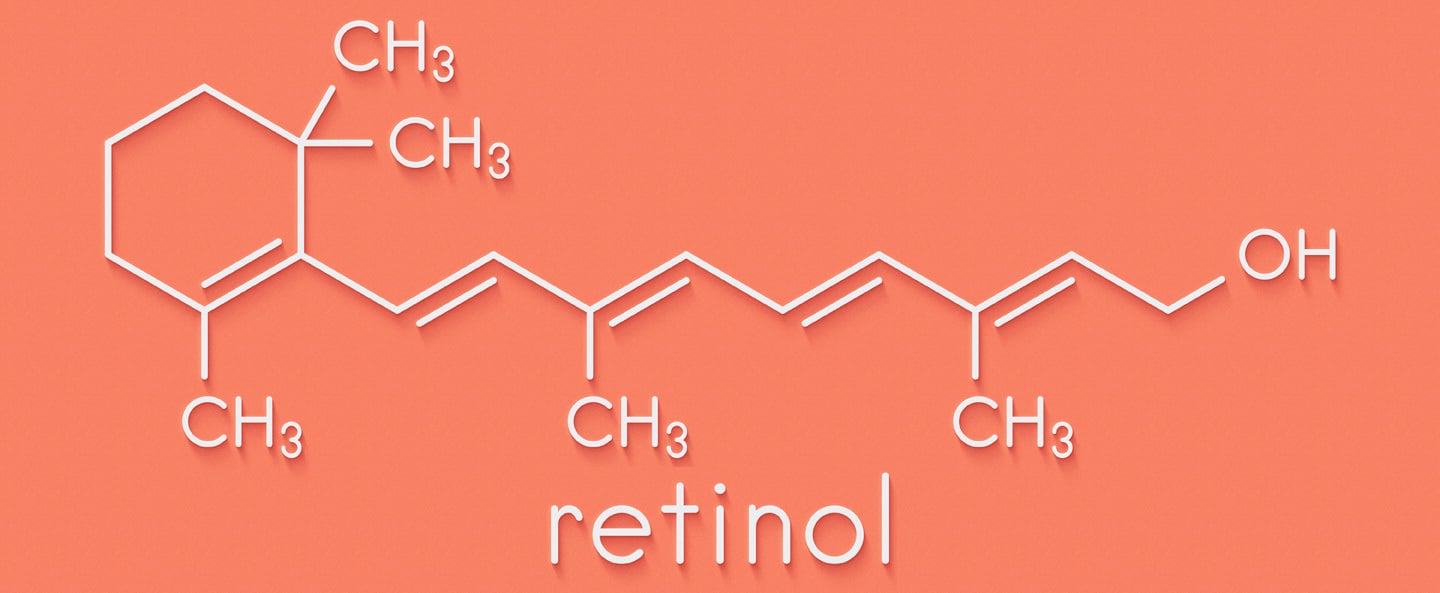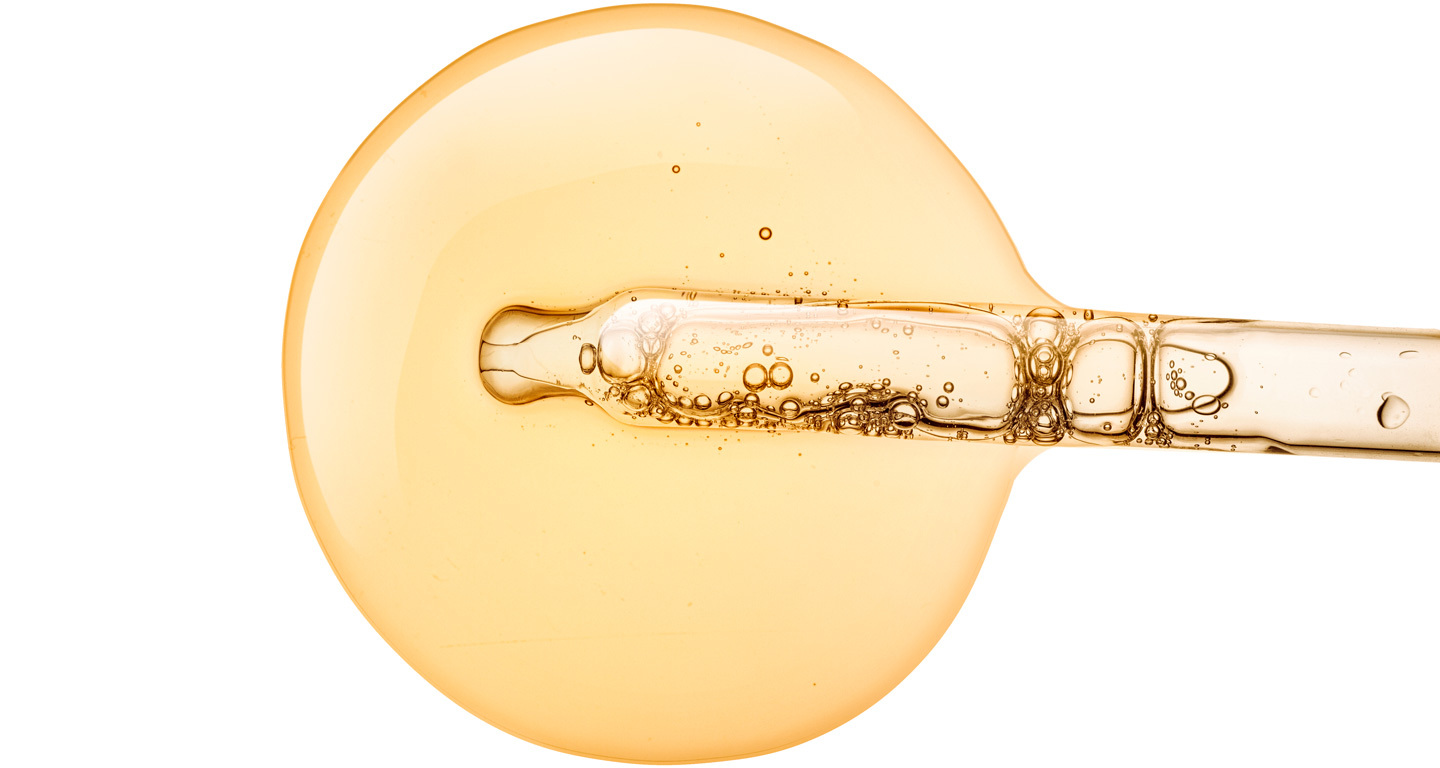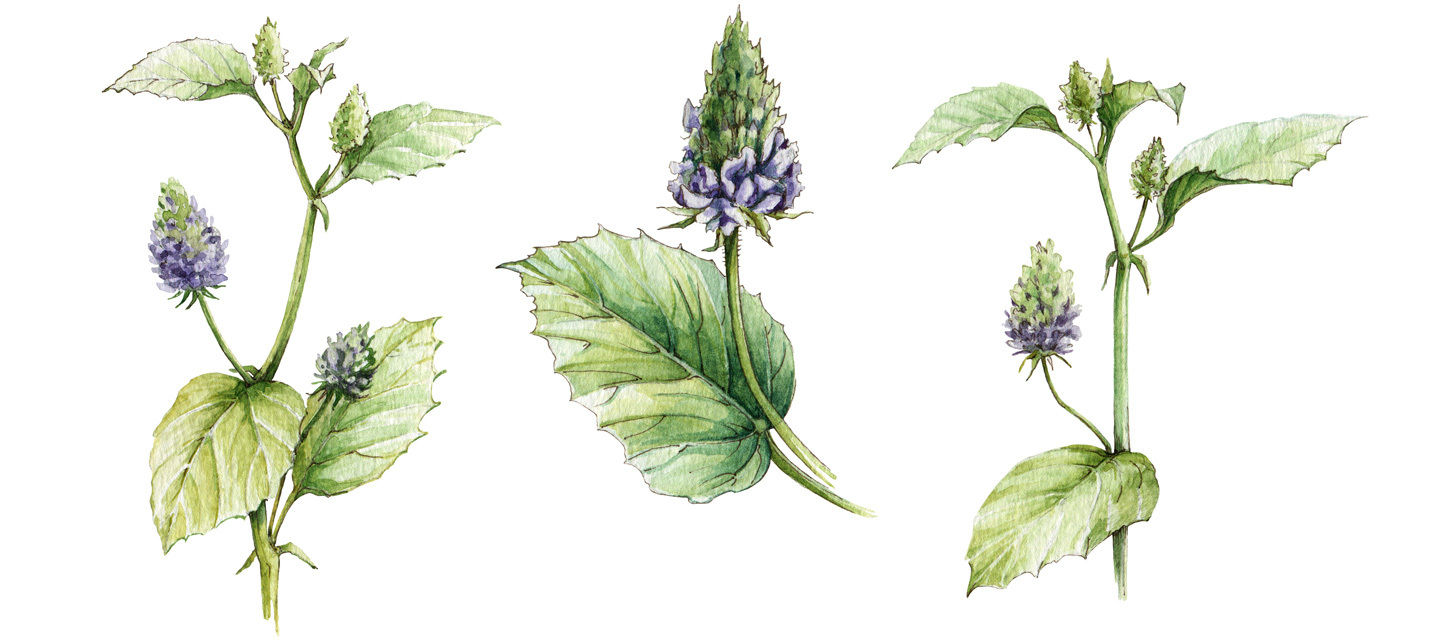 News
Articles & Recipes
Articles
Vitamin A Chemistry
News
Articles & Recipes
Articles
Vitamin A Chemistry
Vitamin A Chemistry

While the inclusion of vitamin A into an anti-ageing formula is undisputed, there are some areas of confusion around the chemistry and dose of this biologically active ingredient. In addition, there are many natural 'retinol-like' actives being promoted that deserve a mention in our bid to produce stronger, better, safer and greener anti-ageing products suitable for everybody!
Step 1: Getting specific with names.
Vitamin A is not just one thing, it is an umbrella term for all the usable forms. Our bodies can accept and transform both retinyl palmitate and retinol into retinaldehyde and retinoic acid depending on what its needs are. Cosmetic ingredient manufacturers honed-in on our skin chemistry, producing the nature-identical analogues that cosmetic chemists now prize.
While there are a few different forms of vitamin A, cosmetic chemists mostly formulate with Retinol or its esters e.g.: Retinyl Palmitate, Retinyl Acetate, Retinyl Propionate. In some cases, Retinaldehyde is used but this tends to present both manufacturing and end-product stability issues that make it unviable in most cases. Retinoic Acid, the form of vitamin A the body uses to perform its reactions is not a cosmetic ingredient and is instead, restricted to therapeutic goods/ pharmaceutical applications.
Step 2: How much is enough?
The solid 'don't cross this line' mark for cosmetic Vitamin A use is less than 1% Retinol. However, the general consensus based on efficacy and safety testing is more conservative, recommending 0.05% Retinol for body products and up to 0.3% Retinol for other formulations. While exceeding this dose doesn't immediately become unsafe, brands producing products and especially product ranges designed to be used together that feature Vitamin A would be wise to familiarise themselves with the test data that informed these figures. (2)
Retinyl Palmitate has 55% the strength of Retinol
So
0.05% Retinol = 0.091% Retinyl Palmitate
0.3% Retinol = 0.55% Retinyl Palmitate.
Based on all of the above, the advice that we, at New Directions generally gives would be to play safe and never exceed 1% of Retinyl Palmitate (0.55% Retinol Equivalent) in a facial product with 0.5% being the typical and guaranteed 'safe' upper dose as per above.

Step 3: Protecting your chemistry.
Formulating with Vitamin A chemistry can be complicated due to its inherent instability. The further you to down the biologically active path, the harder it is to produce a product that delivers what you put in!
Ingredient Stability:
Retinyl Esters > Retinol > Retinaldehyde> Retinoic Acid
Unless the Vitamin A active is protected from heat, light and oxygen it could degrade before it even reaches the skin. Retinyl Esters are the most stable and easiest to formulate with but have the lowest activity meaning that Retinol is often the Vitamin A chemical of choice for formulators.
Encapsulation
Formulators can gain more creative freedom and improve the chances of their active reaching the skin is by utilising encapsulation techniques. Cellulose capsules such as those found in Cellu Cap R ™ are a great example of this technology.
Cellu Cap R ™ Cellulose Acetate Butyrate, Tricaprylin, Retinol, Pentaerythrityl Tetra-Di-t-Butyl Hydroxyhydrocinnamate
Containing 9% active retinol, the capsules make it possible to formulate stable high strength vitamin A skincare with minimal base odour or colour (Vitamin A chemistry has a characteristic odour and is typically quite orange in colour). Between 1-3% (or up to 5% for a 0.5% active retinol concentration) of the Cellu Cap R ™ is dispersed into the batch at the end of manufacturing using only a gentle stirring motion making it possible to add these to pre-made base creams should the formulator or brand owner feel inclined.

Step 4: Going Green.
While the options we have discussed so far are all naturally occurring chemicals, they are also most likely to be factory-made rather than extracted from nature. Brands looking to harness the power of vitamin A, directly from nature do have options that span everything from simple and cost-effective to more concentrated and expensive!
Carotenoids
Carotenoids are often expressed in plants as part of their red, orange and yellow colouring. Beta carotene is one type of carotenoid and it is this that has the Vitamin A association. Beta carotene is naturally present in our skin and although there is still some controversy over the exact mechanisms, it is generally agreed that it can be transformed into Retinyl esters (retinyl palmitate) by the skin when topically applied. (3)
While it is difficult to ascribe an equivalence to Beta Carotene (4) health guidelines place its value at between 0.05-0.3 Retinol Equivalents depending on how it is introduced to the body. In skincare its value possibly sits at the higher end given it can be metabolised in-situ. If correct, cosmetic chemists could treat Beta Carotene as equivalent to Retinyl Palmitate. (5)
Rosehip Oil is a common cosmetic 'go-to' for Vitamin-A -like activity. One study looking at Rosa Mosqueta husk oil recorded a Beta Carotene content of about 0.03% (6) while a 1989 study focusing on Buriti Oil (Mauritia genus of palm trees endemic to Brazil) found a carotenoid fraction ten times that at 0.3%. (7)
In order to give these figures context, crude Sunflower oil typically contains around 0.002% Beta Carotene, a level that drops to 0.0005% when fully refined. (8) Meanwhile Pumpkin seed oil contains around 0.0005% when cold pressed (9).
NOTE: It is important to note that Beta Carotenoid is only one of a number of different carotenoid antioxidants present in fruit and vegetables and that not all of these are oil soluble. So, when doing your research remember that values for whole food will be somewhat different to the cosmetic oil.
Bakuchiol- the plant-based retinol.
Like Carotenoids, Bakuchiol is another phytochemical and it is most famously found in the seeds of Psoralea Corylifolia plants (of the Fabaceae or legume family.) Chinese and Ayurvedic medicine have utilised this chemistry for generations but it has only really got into the cosmetic mainstream relatively recently thanks to one study that found it to generate retinol-like results on the skin. (10)
The study that catalysed widespread interest in Bakuchiol was reported in the British Journal of Dermatology on in early 2019. It took a panel of 44 volunteers and asked them to apply either a 0.5% Bakuchiol cream twice a day or a 0.5% Retinol cream once daily to the face for 12 weeks. Analysis at 0, 4, 8 and 12 weeks showed an equally impressive visible decrease in wrinkle surface area and hyperpigmentation. Further, the Bakuchiol group were less likely that the retinol group to report stinging and irritation. This small study (and one that had Bakuchiol applied twice a day to retinols once) felt really exciting to those desperate for a plant-derived retinol. The fact that this could elicit the same visible and measurable results as an industry-standard retinol preparation felt groundbreaking and Bakuchiol quickly became the next big thing! However, as exciting as it may be (and it is), Bakuchiol is not operating on the same pathways as Carotenoids (the true Retinol alternatives) or our own biochemistry. Bakuchiol is quite a different molecule to retinol, and while it can be used to achieve the same results, it is acting as a functional analogue rather than a drop-in replacement. This difference may turn out to be quite unremarkable but given that Bakuchiol is also being trialled for its antimicrobial, anticancer and anti-inflammatory properties it's possible that its dermal activity could stretch beyond the boundaries of just anti-ageing and that can be a double-edged sword.
While studies have shown Bakuchiol to be generally well tolerated, some allergic reactions have manifested, perhaps unsurprisingly given the rush to formulate with it since the above study was published. (10,11,12) That said, when kept to levels of 1% or lower in an appropriate cosmetic vehicle the potential benefits in terms of collagen boosting, wrinkle-reduction, hyper-pigmentation correction and improved skin elasticity all in a completely natural plant-based extract are definitely worth further investigation.
Step 5: Absorption through the skin.
In spite of our skin containing retinol receptors, data typically points to only 5-8% of the applied dose making it through the skin's deeper layers. Whether that matters or not is a topic for further debate but given Vitamin A's functionality, it's likely in the skin's interest to keep this vitamin in the skin. It certainly makes using Vitamin A based skincare safer if the active doesn't end up racing through your blood stream! (13)
While cosmetic chemists are somewhat limited by pharmaceutical laws with regards to the use of this active, the data shows that there is much to be gained from daily use of low-dose Vitamin A skincare especially when the vitamin A it contains is shelf-stable and appropriately delivered.
In terms of photostability, contrary to popular opinion, while retinol and retinyl palmitate are prone to photo-instability as ingredients, both have a low potential for photo-irritation as used in the cosmetic setting. While most people will tend to use Vitamin A skincare at night, cautious day use has been found beneficial due to vitamin A's antioxidant capacity.
For cosmetic chemists and brand owners looking to utilise Vitamin A chemistry in their skin care there are now more ingredient options than ever before. Whether your ideal vitamin A actives come as beta-carotene rich oils or Bakuchiol extract or you favour a high-tech encapsulated serum or low-cost night cream, there really is something out there for everyone. Just remember, when it comes to Vitamin A chemistry, a low dose, regularly applied is going to keep most skins happy, healthy and youthfully radiant. (14)
Amanda Foxon-Hill
References:
- Törmä H. Regulation of keratin expression by retinoids. Dermatoendocrinol. 2011;3(3):136-140. doi:10.4161/derm.3.3.15026
- Opinion On Vitamin A, (Retinol, Retinyl Acetate, Retinyl Palmitate) - Scientific Committee on Consumer Safety, SCCS
- Antille C, Tran C, Sorg O, Saurat JH. Topical beta-carotene is converted to retinyl esters in human skin ex vivo and mouse skin in vivo. Exp Dermatol. 2004;13(9):558-561. doi:10.1111/j.0906-6705.2004.00194.x
- Tang, .G. (2012). Techniques for measuring vitamin A activity from β-carotene. American Journal of Clinical Nutrition, 96(5),
- Vitamin A Fact Sheet for Health Professionals
- Effect of Rosa Mosqueta Husk Extract (Rosa rubiginosa) on Thermooxidation of Grape Seed Oil
- Vitamin A activity of buriti (Mauritia vinifera Mart) and its effectiveness in the treatment and prevention of xerophthalmia
- Influence of industrial physical refining on tocopherol, chlorophyll and beta carotene content in sunflower and rapeseed oil. Kreps, F., Vrbiková, L., & Schmidt (2014).
- Jukneviciene, Edita & Černiauskienė, Judita & Jurgita, Kulaitienė & Juknevičienė, Živilė. (2013). Oil pumpkins - Important source of antioxidants. Journal of Food, Agriculture and Environment. 11. 156-158
- Dhaliwal, S., Rybak, I., Ellis, S., Notay, M., Trivedi, M., Burney, W., Vaughn, A., Nguyen, M., Reiter, P., Bosanac, S., Yan, H., Foolad, N., & Sivamani, R. (2019). Assessment of topical bakuchiol and retinol for facial photoageing. British Journal of Dermatology, 180(2), e45-e45.
- Raison Peyron, N., & Dereure, O. (2020). A new case of contact dermatitis to bakuchiol in a cosmetic cream.
- Malinauskiene, L., Linauskiene, K., Černiauskas, K., & Chomičiene, A. (2019). Bakuchiol-A new allergen in cosmetics.
- Mukherjee S, Date A, Patravale V, Korting HC, Roeder A, Weindl G. Retinoids in the treatment of skin aging: an overview of clinical efficacy and safety. Clin Interv Aging.
- Retinol - cosmeticsinfo.org
